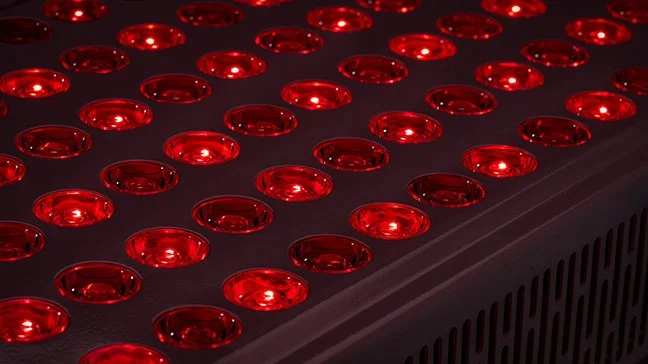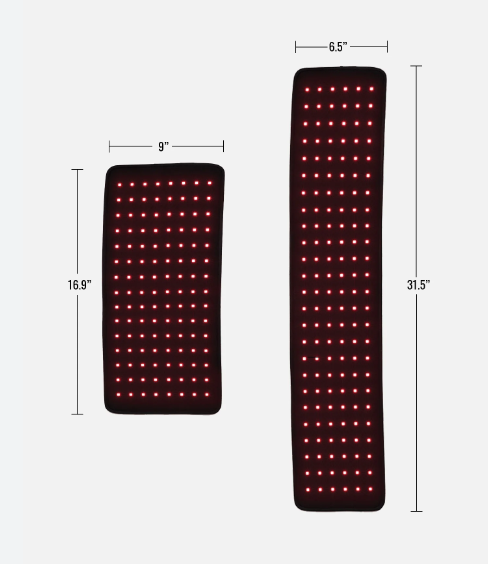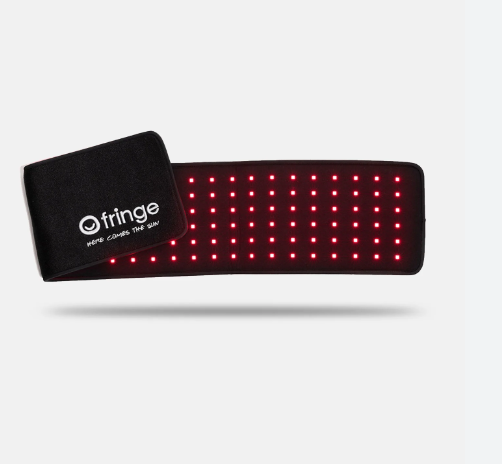Does Red Light Therapy Really Work? My Honest Review of the Fringe Red Light Therapy Wrap
This blog is based on a video from my YouTube channel. If you prefer to watch that, click here.
Red light therapy is everywhere right now. From wellness clinics to celebrity skincare routines, it’s being praised for benefits like faster recovery, reduced pain, and even glowing skin. But does it actually work—or is it just another overhyped wellness trend?
As a health coach who’s tried my fair share of gadgets, I decided to put the Fringe Red Light Therapy Wrap to the test. In this post, I’ll walk you through how red light therapy works, what the science says, how to use it at home, and my personal experience using the device consistently.
What Is Red Light Therapy?
Red light therapy, also known as photobiomodulation (PBM), uses specific wavelengths of red and near-infrared light to stimulate healing at the cellular level. Originally developed by NASA to help grow plants in space, this technology has since been studied for its effects on human health—and the results are promising.
Here’s a simple explanation: when red and near-infrared light penetrate your skin, they’re absorbed by your cells’ mitochondria (the energy powerhouses). This light exposure helps increase ATP production, improve blood flow, and reduce inflammation. All of this can support the body’s natural healing processes.
The most common wavelengths used are:
660nm (red light) – targets surface-level tissues like skin and muscles
850nm (near-infrared light) – penetrates deeper to reach joints and bones
Meet the Fringe Red Light Therapy Wrap
I tested the Fringe Red Light Therapy Wrap, a portable, flexible device designed for at-home use. It features:
60W power output with 120 medical-grade LEDs (360 chips total)
Dual wavelengths (660nm red and 850nm NIR) in a 1:2 ratio
20–40 mW/cm² intensity — strong enough to be effective without overheating tissue
A built-in 20-minute timer and adjustable brightness
A rechargeable battery that supports 3–4 uses per charge
The wrap is made with flexible neoprene and includes an adjustable strap, so you can wear it on different parts of the body like your knee, shoulder, or lower back.
How to Use Red Light Therapy at Home
Using the device is incredibly simple. After charging it, you can place it over the desired area and power it on. Sessions are typically 20 minutes long, which the built-in timer handles for you.
For optimal results:
Use it consistently (I started with 5 sessions per week)
Hold the wrap directly against the skin
Avoid overuse — more isn’t always better due to what’s called the biphasic dose response (there’s a “sweet spot” for effectiveness)
My Personal Experience: Real Results?
I’ll admit—I was skeptical at first. But after a few weeks of using the Fringe wrap consistently, I started noticing some meaningful changes:
Faster muscle recovery after workouts
Less lingering soreness in my shoulders and knees
Improved skin texture on the treated areas
The relief wasn’t instant, but it was real—and it built up over time. I also appreciated how easy it was to use while working at my desk or relaxing on the couch.
One unexpected benefit? A noticeable reduction in stiffness during colder mornings. As someone who’s always on the move, that alone made it worth it.
What the Science Says
Red light therapy isn’t just anecdotal—it’s backed by hundreds of studies. Research shows that PBM can:
Reduce inflammation and oxidative stress
Stimulate collagen production (great for skin health)
Improve circulation and tissue repair
Aid in healing joint and muscle injuries
Studies also show that intensity, duration, and wavelength matter. Devices like the Fringe Wrap are designed with those parameters in mind—using clinically supported specs for maximum benefit.
Bonus: the Fringe device is FDA-registered for pain relief and increased blood circulation.
Pros and Cons of the Fringe Red Light Wrap
✅ Pros:
Scientifically backed wavelengths and intensity
Flexible design that fits comfortably on most joints
Great battery life and ease of use
Safe: No EMFs at skin level (0.0 mG)
❌ Cons:
Price point may be high for some users
Covers a relatively small surface area (not ideal for full-body use)
Takes ~3 hours to fully charge
Who Should Try It?
This device is ideal for:
Athletes and active individuals
People with chronic pain or inflammation
Anyone recovering from an injury
Those looking to improve joint mobility or skin health naturally
If you're looking for a non-invasive, drug-free way to support recovery and reduce everyday aches, red light therapy is definitely worth considering.
Final Thoughts: Is It Worth It?
In my experience, yes. Red light therapy offers real, measurable benefits—especially when used consistently and correctly. And the Fringe Red Light Therapy Wrap makes it easy to bring this powerful healing tool into your everyday routine.
If you're curious about trying red light therapy yourself, I highly recommend checking out this device. It’s backed by science, easy to use, and has genuinely improved my recovery process.



